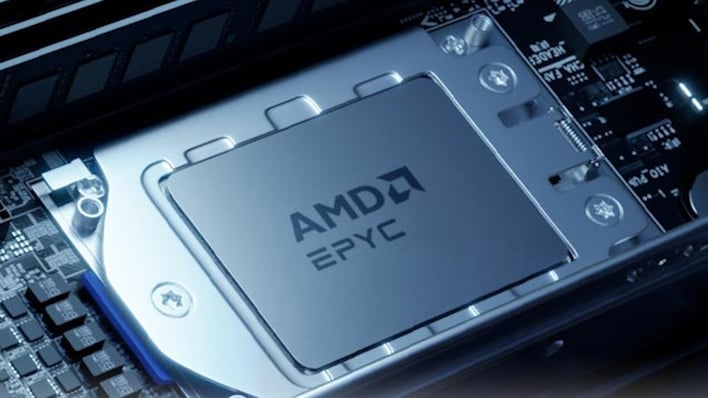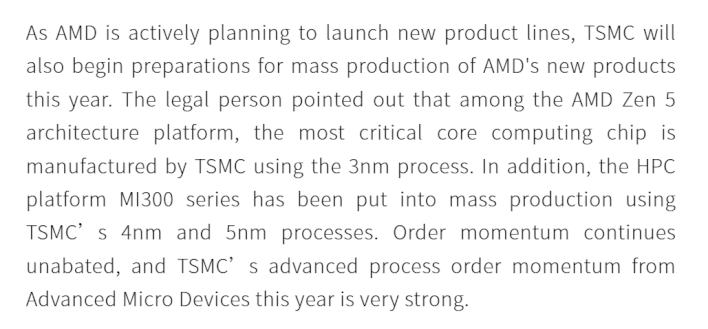AMD Zen 5c Cores Might Be Built On A More Advanced 3nm Node Than Zen 5

AMD's "dense" cores debuted with the EPYC "Bergamo" processors, denoted with "97x4" model numbers. These server CPUs can't clock as high as the EPYC "Genoa" processors using Zen 4, but they pack in up to 128 CPU cores in a single socket. AMD is expected to offer EPYC processors with both standard and dense Zen 5 cores, but it seems like there may be a bigger difference in the two than just the core count and clock rate.

A report from Chinese outlet UDN notes that "AMD's new 3nm process Zen 5 architecture" will enter mass production in Q2 of this year. That's in stark contrast to earlier reports that Zen 5 was already in mass production as part of the "Granite Ridge" desktop CPUs expected to launch sometime in the second half of the year. It's not impossible that mass production in Q2 could mean a launch late in the year, but there's a key detail: Granite Ridge is thought to be on TSMC's 4nm process, not 3nm.
So what are these 3nm parts? Speculation around the web is that they're actually Zen 5c chiplets meant for EPYC CPUs sporting dense cores. These CCDs are thought to have an incredible 32 cores per chiplet, distributed into two sixteen-core CCXes much as Zen 2 and earlier Zen processors had dual quad-core CCXes on an 8-core chiplet. Each CCX is expected to have 32MB of L3 cache, giving the chiplet 64MB of L3 in total. It's thought that EPYC will have up to six of these chiplets, for a total of 192 Zen 5c CPU cores in a single socket.
AMD's dense CCDs need more links to the cIOD due to the higher core counts.
There's also the consideration that TSMC's currently-available 3nm process is actually tuned for low power and mobile applications. That wouldn't suit a big 400-watt EPYC CPU that wants to clock to 4 GHz or higher, but it might be a fair match for these dense CPUs that barely even hit 3 GHz on the top end and typically clock much more like a mobile processor.
Additionally, it would make sense for AMD to reserve the likely-expensive 3nm process for its highest-margin parts, and those are almost assuredly going to be these high-core-count EPYC processors. Notably, the standard Zen 5 CCD for "Granite Ridge" is thought to still simply be 8 cores just like previous Zen processors, meaning that the desktop Zen 5 parts are expected to top out at 16 cores yet again.


